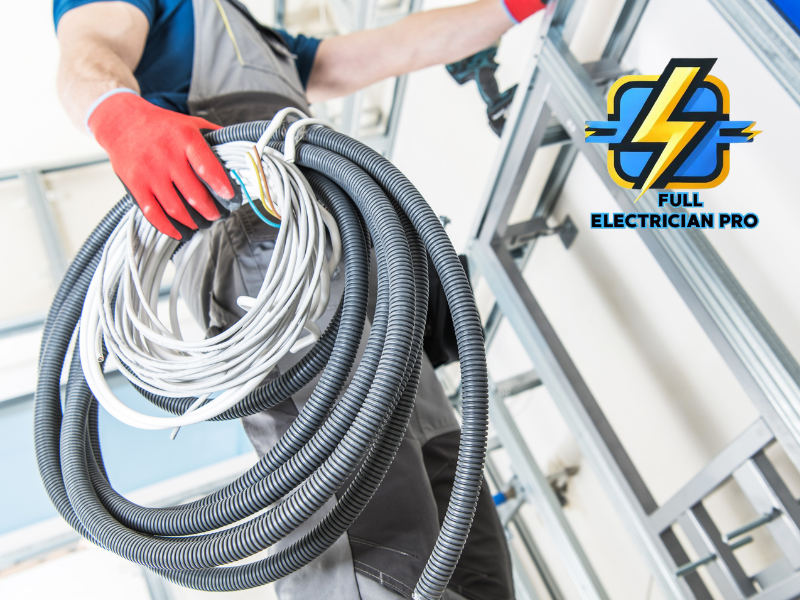
Rewiring: Common Issues, Repairs, and Benefits
Rewiring a home or business is a significant but necessary project to ensure safety, efficiency, and compliance with modern electrical standards. Whether due to outdated systems, electrical faults, or expanding electrical demands, rewiring provides an essential upgrade to your property’s infrastructure. This guide covers the common and uncommon issues that lead to rewiring, necessary repairs, and the benefits of updating your electrical wiring system.
Common Issues Leading to Rewiring
1. Outdated Electrical Systems: Older homes often still use outdated electrical systems, such as knob-and-tube wiring or aluminum wiring, which are no longer considered safe or efficient. These systems struggle to meet modern electrical demands and pose significant fire risks.
2. Frequent Circuit Breaker Trips: Overloaded circuits can cause frequent trips to the breaker box, indicating that the system is unable to handle the electrical load. This is a common issue in homes with aging wiring that was not designed for today’s technology.
3. Burning Smells or Discolored Outlets: A burning smell or outlets that appear discolored or scorched are signs of overheating, potentially caused by faulty wiring. This is a serious safety concern that requires immediate attention and likely rewiring.
4. Flickering or Dimming Lights: Flickering or dimming lights, especially when multiple appliances are in use, may indicate insufficient electrical capacity or faulty wiring. Rewiring ensures a steady and reliable flow of electricity to meet demand.
5. Two-Prong Outlets: Many older homes still have two-prong outlets that lack grounding. Grounding is critical for safety and protecting appliances from electrical surges. Rewiring with grounded outlets is essential for modern homes and businesses.
Uncommon or Complex Issues Requiring Rewiring
1. Arcing and Sparking: Arcing occurs when electrical current jumps between two points, often due to damaged or exposed wires. This can cause sparks, electrical fires, or power outages if not addressed through rewiring.
2. Inconsistent Voltage: Inconsistent voltage can cause your electrical appliances to malfunction or be damaged. This is often caused by faulty wiring, loose connections, or improper installation, all of which rewiring can resolve.
3. Electrical Surges: Repeated electrical surges can damage appliances and lighting. Rewiring, along with installing surge protection, can protect the system from surges caused by lightning or grid fluctuations.
4. Improper Wire Sizing: Using incorrect wire sizes for the electrical load is a serious hazard. Wires that are too small for the required electrical flow can overheat, leading to fires. Rewiring ensures that the correct gauge wires are installed to safely manage the load.
5. Hidden Wiring Issues: Electrical wiring hidden behind walls or in ceilings can be damaged by pests, water leaks, or aging materials. These hidden issues may go unnoticed until they cause major problems, making rewiring a necessary solution to prevent further damage.
Rewiring Repairs
1. Full or Partial Rewiring: Full rewiring involves replacing all the wiring in your home, while partial rewiring focuses on updating specific sections of your electrical system that are faulty or outdated. Both approaches improve safety and efficiency.
2. Upgrading the Electrical Panel: Rewiring is often accompanied by upgrading the electrical panel to handle higher electrical demands. This is essential for homes and businesses with modern appliances, HVAC systems, or other high-energy-consuming equipment.
3. Installing Grounded Outlets: Replacing two-prong outlets with grounded three-prong outlets ensures safety and protects your devices from electrical surges.
4. Replacing Damaged Wiring: Rewiring involves replacing any damaged or faulty wiring to restore the safety and functionality of your electrical system. This reduces the risk of fires and electrical shocks.
5. Securing Connections and Installing Proper Switches: During rewiring, electricians will also secure loose connections and replace old or faulty switches to ensure a reliable and consistent power flow.
Reasons to Rewire Your Home or Business
1. Improved Safety: Rewiring eliminates old, dangerous wiring and replaces it with modern, safe wiring. This reduces the risk of electrical fires, shocks, and outages, keeping your family or employees safe.
2. Enhanced Electrical Capacity: Today’s homes and businesses rely on far more electrical devices than ever before. Rewiring ensures that your electrical system can handle the increased load without frequent tripping or overheating.
3. Energy Efficiency: Rewiring can improve the overall efficiency of your electrical system. Modern wiring and properly sized circuits reduce energy waste and improve the performance of appliances and electronics, lowering your energy bills.
4. Increased Property Value: Homes and businesses with modern wiring are more attractive to potential buyers and investors. Rewiring can increase the value of your property and make it easier to sell or rent in the future.
5. Compliance with Modern Codes: Electrical codes are constantly evolving to improve safety and efficiency. Rewiring brings your property up to code, ensuring compliance with the latest regulations and improving long-term reliability.
In conclusion, rewiring is an essential investment for any home or business with outdated, damaged, or insufficient electrical systems. Whether improving safety, increasing capacity, or boosting energy efficiency, professional rewiring ensures that your property meets modern electrical demands and safety standards.